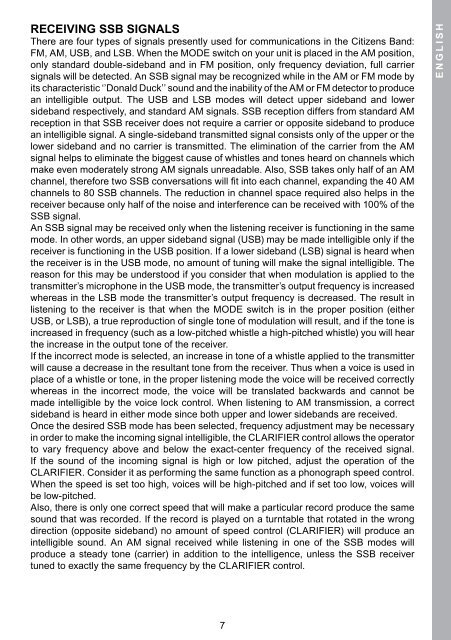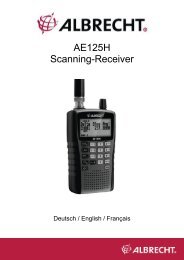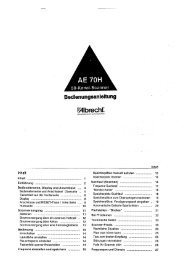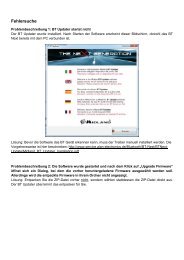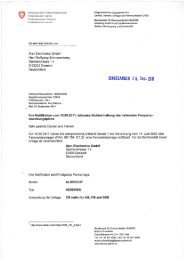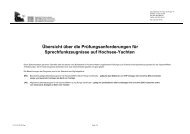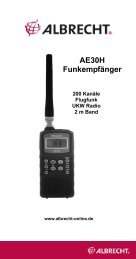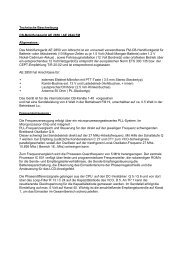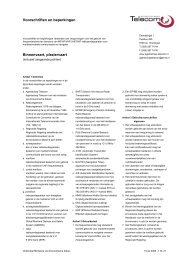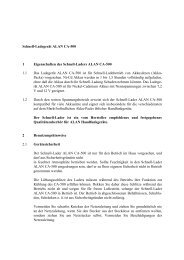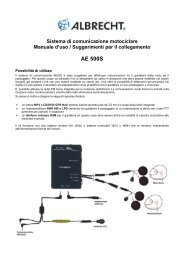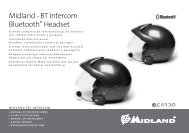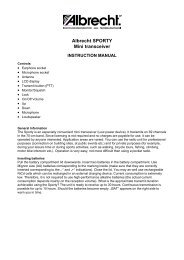ALAN 8001S EURO
ALAN 8001S EURO
ALAN 8001S EURO
Create successful ePaper yourself
Turn your PDF publications into a flip-book with our unique Google optimized e-Paper software.
RECEIVING SSB SIGNALS<br />
There are four types of signals presently used for communications in the Citizens Band:<br />
FM, AM, USB, and LSB. When the MODE switch on your unit is placed in the AM position,<br />
only standard double-sideband and in FM position, only frequency deviation, full carrier<br />
signals will be detected. An SSB signal may be recognized while in the AM or FM mode by<br />
its characteristic ‘’Donald Duck’’ sound and the inability of the AM or FM detector to produce<br />
an intelligible output. The USB and LSB modes will detect upper sideband and lower<br />
sideband respectively, and standard AM signals. SSB reception differs from standard AM<br />
reception in that SSB receiver does not require a carrier or opposite sideband to produce<br />
an intelligible signal. A single-sideband transmitted signal consists only of the upper or the<br />
lower sideband and no carrier is transmitted. The elimination of the carrier from the AM<br />
signal helps to eliminate the biggest cause of whistles and tones heard on channels which<br />
make even moderately strong AM signals unreadable. Also, SSB takes only half of an AM<br />
channel, therefore two SSB conversations will fit into each channel, expanding the 40 AM<br />
channels to 80 SSB channels. The reduction in channel space required also helps in the<br />
receiver because only half of the noise and interference can be received with 00% of the<br />
SSB signal.<br />
An SSB signal may be received only when the listening receiver is functioning in the same<br />
mode. In other words, an upper sideband signal (USB) may be made intelligible only if the<br />
receiver is functioning in the USB position. If a lower sideband (LSB) signal is heard when<br />
the receiver is in the USB mode, no amount of tuning will make the signal intelligible. The<br />
reason for this may be understood if you consider that when modulation is applied to the<br />
transmitter’s microphone in the USB mode, the transmitter’s output frequency is increased<br />
whereas in the LSB mode the transmitter’s output frequency is decreased. The result in<br />
listening to the receiver is that when the MODE switch is in the proper position (either<br />
USB, or LSB), a true reproduction of single tone of modulation will result, and if the tone is<br />
increased in frequency (such as a low-pitched whistle a high-pitched whistle) you will hear<br />
the increase in the output tone of the receiver.<br />
If the incorrect mode is selected, an increase in tone of a whistle applied to the transmitter<br />
will cause a decrease in the resultant tone from the receiver. Thus when a voice is used in<br />
place of a whistle or tone, in the proper listening mode the voice will be received correctly<br />
whereas in the incorrect mode, the voice will be translated backwards and cannot be<br />
made intelligible by the voice lock control. When listening to AM transmission, a correct<br />
sideband is heard in either mode since both upper and lower sidebands are received.<br />
Once the desired SSB mode has been selected, frequency adjustment may be necessary<br />
in order to make the incoming signal intelligible, the CLARIFIER control allows the operator<br />
to vary frequency above and below the exact-center frequency of the received signal.<br />
If the sound of the incoming signal is high or low pitched, adjust the operation of the<br />
CLARIFIER. Consider it as performing the same function as a phonograph speed control.<br />
When the speed is set too high, voices will be high-pitched and if set too low, voices will<br />
be low-pitched.<br />
Also, there is only one correct speed that will make a particular record produce the same<br />
sound that was recorded. If the record is played on a turntable that rotated in the wrong<br />
direction (opposite sideband) no amount of speed control (CLARIFIER) will produce an<br />
intelligible sound. An AM signal received while listening in one of the SSB modes will<br />
produce a steady tone (carrier) in addition to the intelligence, unless the SSB receiver<br />
tuned to exactly the same frequency by the CLARIFIER control.<br />
7<br />
E N G L I S H


